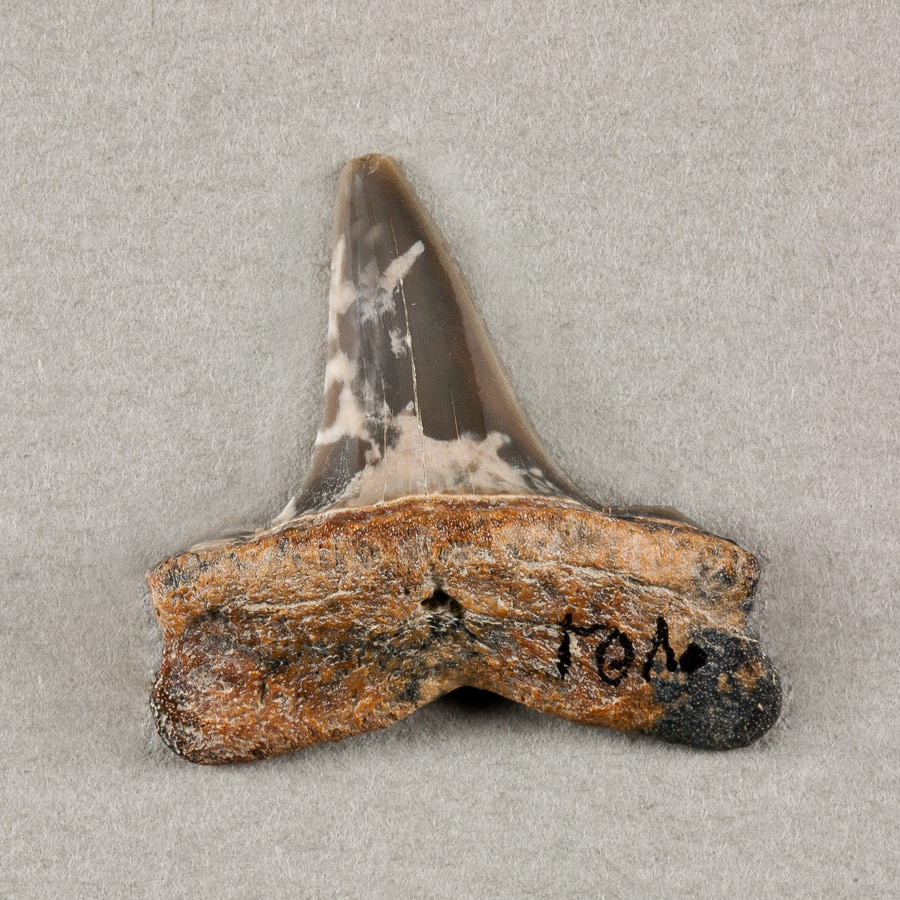Macrorhizodus nolfi
Zhelezko, 1999
Classification: Elasmobranchii Lamniformes Lamnidae
Reference of the original description
Elasmobranhii i biostratigraphia paleogena Zauralia i Srednei Asii. (Elasmobranchii and Palaeogene biostratigraphy of Transural and Central Asia). Materialy po Stratigrafii i Paleontologii Urala, 3, 324 pp, Ekaterinburg, UrO RAN
Elasmobranhii i biostratigraphia paleogena Zauralia i Srednei Asii. (Elasmobranchii and Palaeogene biostratigraphy of Transural and Central Asia). Materialy po Stratigrafii i Paleontologii Urala, 3, 324 pp, Ekaterinburg, UrO RAN
Synonyms / new combinations and misspellings
Macrorhizodus cf. nolfi
Macrorhizodus cf. nolfi
Types
Macrorhizodus nolfi
Holotype: Darwin Museum: GIK No. 15478/41; Paratype: Darwin Museum: GIK No. 15478/42-45;
Macrorhizodus nolfi
Holotype: Darwin Museum: GIK No. 15478/41; Paratype: Darwin Museum: GIK No. 15478/42-45;
Description:
Citation: Macrorhizodus nolfi Zhelezko, 1999: In: Database of fossil elasmobranch teeth www.shark-references.com, World Wide Web electronic publication, Version 12/2025
Please send your images of "Macrorhizodus nolfi" to info@shark-references.com

Macrorhizodus nolfi Zhelezko, 1999, lingual view, Holotype GIK No. 15478/41 © State Darwin Museum, Moscow

Macrorhizodus nolfi Zhelezko, 1999, lingual view, Holotype GIK No. 15478/41 © State Darwin Museum, Moscow
Remarks
shark-references Species-ID=13204;
shark-references Species-ID=13204;
References

Fossile hajtaender fra Trelde Naes. Self-published
Feeding ecology has shaped the evolution of modern sharks. Current Biology, 31(23), 5138–5148
DOI: 10.1016/j.cub.2021.09.028

Climate cooling and clade competition likely drove the decline of lamniform sharks. Proceedings of the National Academy of Sciences of the United States of America, 116(41), 20584–20590
DOI: 10.1073/pnas.1902693116

The Turanian Basin in the Eocene: the new data on the fossil sharks and rays from the Kyzylkum Desert (Uzbekistan). Proceedings of the Zoological Institute, Russian Academy of Sciences, 320(1), 50–65
A study of the sharks and rays from the Lillebælt Clay (Early–Middle Eocene) of Denmark, and their palaeoecology. Bulletin of the Geological Society of Denmark, 62, 39–88
DOI: 10.37570/bgsd-2014-62-04

The Aktulagay section, west Kazakhstan: a key site fornorthern mid-latitude Early Eocene stratigraphy. Stratigraphy, 10(3): 171–209

London Clay Fossils of Kent and Essex. Rochester, Kent, Medway Fossil and Mineral Society, 228 p, ISBN: 978–0–9538243–1–1

Elasmobranhii i biostratigraphia paleogena Zauralia i Srednei Asii. (Elasmobranchii and Palaeogene biostratigraphy of Transural and Central Asia). Materialy po Stratigrafii i Paleontologii Urala, 3, 324 pp, Ekaterinburg, UrO RAN

Fossile hajtaender fra Trelde Naes. Self-published
Feeding ecology has shaped the evolution of modern sharks. Current Biology, 31(23), 5138–5148
DOI: 10.1016/j.cub.2021.09.028

Climate cooling and clade competition likely drove the decline of lamniform sharks. Proceedings of the National Academy of Sciences of the United States of America, 116(41), 20584–20590
DOI: 10.1073/pnas.1902693116

The Turanian Basin in the Eocene: the new data on the fossil sharks and rays from the Kyzylkum Desert (Uzbekistan). Proceedings of the Zoological Institute, Russian Academy of Sciences, 320(1), 50–65
A study of the sharks and rays from the Lillebælt Clay (Early–Middle Eocene) of Denmark, and their palaeoecology. Bulletin of the Geological Society of Denmark, 62, 39–88
DOI: 10.37570/bgsd-2014-62-04

The Aktulagay section, west Kazakhstan: a key site fornorthern mid-latitude Early Eocene stratigraphy. Stratigraphy, 10(3): 171–209

London Clay Fossils of Kent and Essex. Rochester, Kent, Medway Fossil and Mineral Society, 228 p, ISBN: 978–0–9538243–1–1

Elasmobranhii i biostratigraphia paleogena Zauralia i Srednei Asii. (Elasmobranchii and Palaeogene biostratigraphy of Transural and Central Asia). Materialy po Stratigrafii i Paleontologii Urala, 3, 324 pp, Ekaterinburg, UrO RAN

















